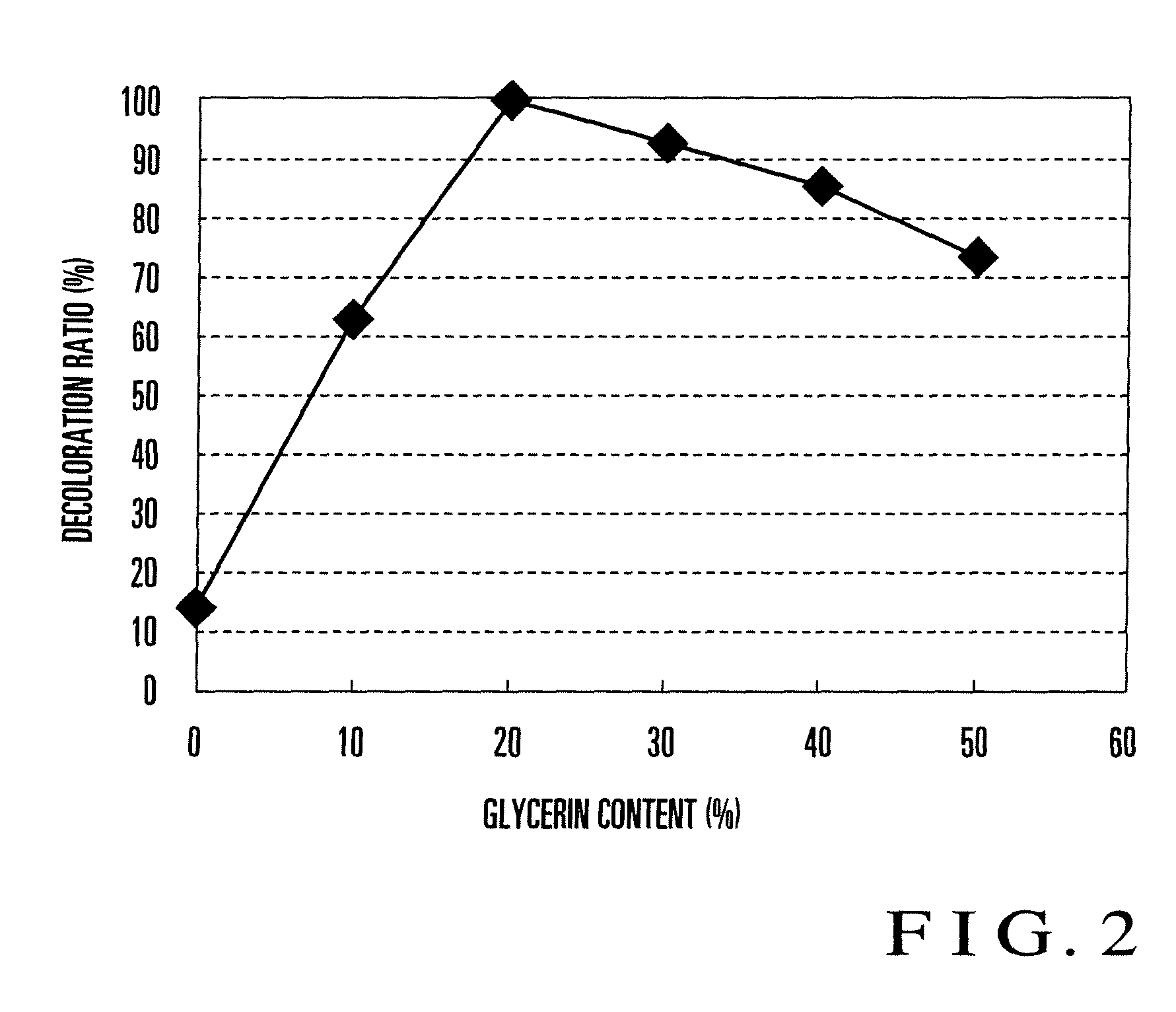Ozone detecting device
a detection device and ozone technology, applied in the direction of optical radiation measurement, instruments, analysis using chemical indicators, etc., can solve the problems of inability to simple measurements, affecting the environment, and affecting the effect of environmental pollution
- Summary
- Abstract
- Description
- Claims
- Application Information
AI Technical Summary
Benefits of technology
Problems solved by technology
Method used
Image
Examples
embodiment 1
[0029]First, Embodiment 1 of the present invention will be explained. FIGS. 1A to 1E are views of steps for explaining an example of an ozone detecting device manufacturing method according to Embodiment 1 of the present invention. First, as shown in FIG. 1A, a vessel 102 containing a detector solution 101 is prepared. The detector solution 101 is an aqueous solution prepared by dissolving a dye made of alizarin (1,2-dihydroxyanthraquinone: C14H8O2(OH)2) and a humectant made of glycerin (C3H8O3), and alkalized by dissolving a base. The content of the humectant is about 20 wt %.
[0030]For example, the detector solution 101 is prepared by dissolving 0.025 g of alizarin in 25 ml of an aqueous solution in which sodium hydroxide as a base that is an alkaline substance is dissolved at a concentration of 0.1 mol / liter, and adding 10 g of glycerin and water to the solution such that the total amount is 50 g. Alizarin is an anthraquinone-based dye (dyestuff). The detector solution 101 prepare...
embodiment 2
[0052]Another ozone detecting device according to Embodiment 2 of the present invention will be explained below. In this embodiment, the case in which Alizarin Red S (also called Mordant Red 3) was used as an anthraquinone-based dye instead of alizarin described above will be explained. First, 0.03 g of Alizarin Red S are dissolved in 25 ml of an aqueous 0.1-mol / liter sodium hydroxide solution, and water is added to the solution such that the total amount is 50 g, thereby forming detector solution G. The formed detector solution does not contain glycerin as a humectant. Ozone detecting device G is formed by using detector solution G in the same manner as described above. The color of ozone detecting device G thus formed is purple.
[0053]Also, 0.03 g of Alizarin Red S are dissolved in 25 ml of an aqueous 0.1-mol / liter sodium hydroxide solution, and 5 g of glycerin as a humectant and water are added to the solution to make 50 g, thereby forming detector solution H. Ozone detecting devi...
embodiment 3
[0093]The case in which ethyleneglycol was used as a humectant will be explained below. First, 0.025 g of alizarin are dissolved in 25 ml of an aqueous 0.1-mol / liter sodium hydroxide solution, and 5 g of ethyleneglycol as a humectant and water are added to the solution to make 50 g, thereby forming detector solution M. Ozone detecting device M is formed by using detector solution M in the same manner as described above. The color of ozone detecting device M thus formed is purple.
[0094]Also, 0.025 g of alizarin are dissolved in 25 ml of an aqueous 0.1-mol / liter sodium hydroxide solution, and 10 g of ethyleneglycol as a humectant and water are added to the solution to make 50 g, thereby forming detector solution N. Ozone detecting device N is formed by using detector solution N in the same manner as described above. The color of ozone detecting device N thus formed is purple.
[0095]In addition, 0.025 g of alizarin are dissolved in 25 ml of an aqueous 0.1-mol / liter sodium hydroxide solu...
PUM
 Login to View More
Login to View More Abstract
Description
Claims
Application Information
 Login to View More
Login to View More - R&D
- Intellectual Property
- Life Sciences
- Materials
- Tech Scout
- Unparalleled Data Quality
- Higher Quality Content
- 60% Fewer Hallucinations
Browse by: Latest US Patents, China's latest patents, Technical Efficacy Thesaurus, Application Domain, Technology Topic, Popular Technical Reports.
© 2025 PatSnap. All rights reserved.Legal|Privacy policy|Modern Slavery Act Transparency Statement|Sitemap|About US| Contact US: help@patsnap.com



